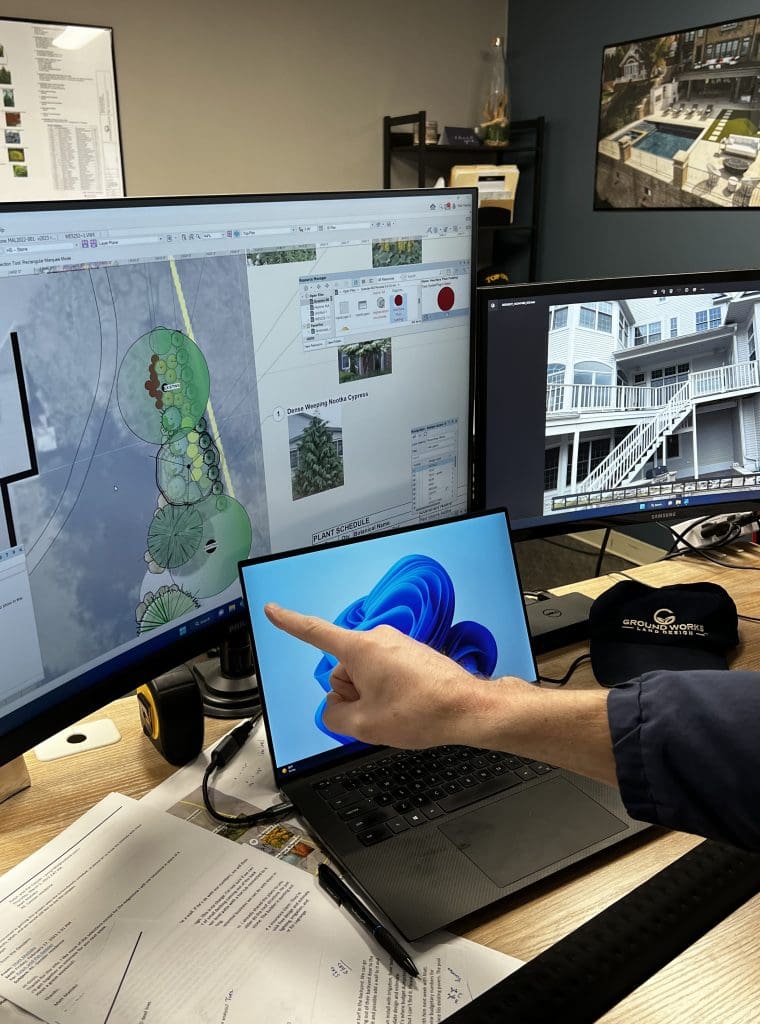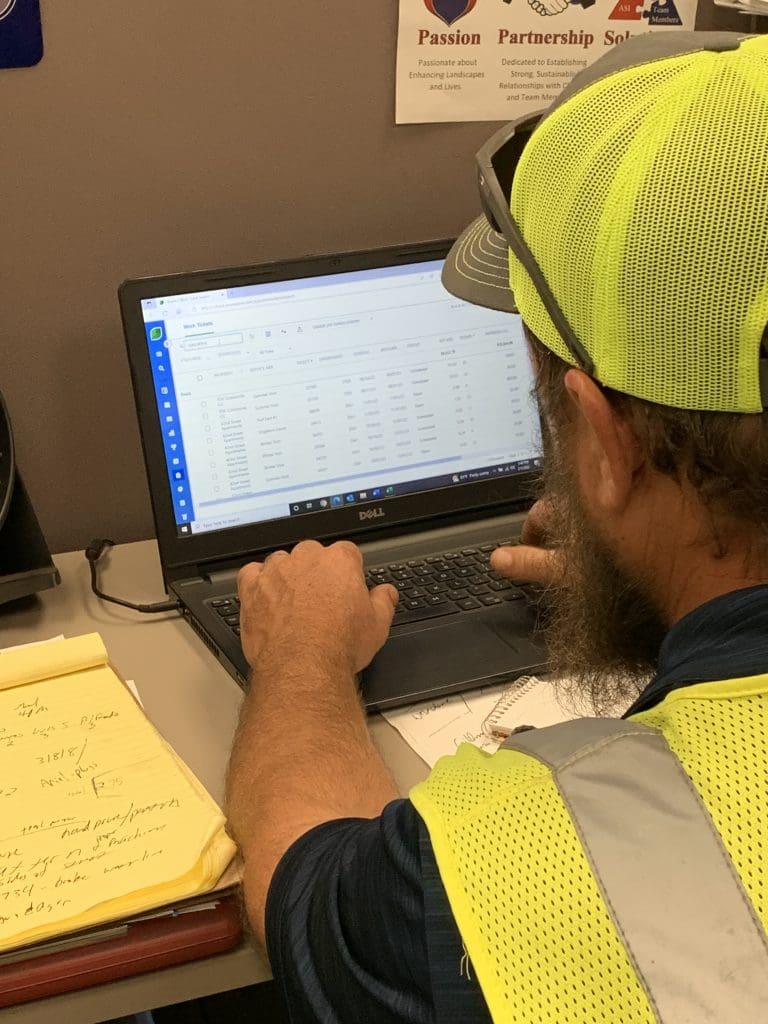
Adopting more technology in your operations not only helps with your company’s efficiency, but can also communicate to new hires that you are a forward-thinking business.
Rather than having the mindset of ‘if it’s not broke, don’t fix it,’ integrating new types of technology shows your commitment to innovation and can make tasks less demanding.
“Technology, of any kind, should make your life easier by reducing friction,” Michael Mayberry*, CTO for Level Green Landscape, based in Upper Marlboro, Maryland. “If technology isn’t making your life easier, it is probably not set up correctly, not being used correctly, or is the wrong selection for the task. It should allow people to reduce the time necessary to complete certain tasks, therefore, allowing them more personal time and being able to manage more work.”
Piquing Their Interest
As for what type of technology matters to job candidates and current employees, it ranges from business software like Aspire to equipment like robotic mowers. Joe Chiellini, CEO and founder of ASI Landscape Management, based in Tampa, Florida, says Aspire stands out as being important to both their seasoned workers and younger employees.
“Digital timekeeping is a must,” Mayberry says. “I think that more and more people in the industry are using production platforms (i.e., Aspire, BOSS, LMN, etc.) and that helps attract younger employees.”

Chiellini says while they don’t promote the usage of certain technologies like ArborNote or Weathermatic to outsiders, he says word of mouth about them has brought in new hires.
“It attracted probably one of the irrigation technicians we have,” Chiellini says. “He was fresh out of college; the pandemic hit, he was out of work and found us.”
Pam Dooley, owner of Plants Creative Landscapes, based in Scottdale, Georgia, says her employees and job candidates have been most intrigued with robotic mowers.
“Our initiative to be 100 percent battery power in our maintenance division by the end of 2024 has also been very well received,” Dooley says. “Embracing the gains of technology is a big part of our culture. Whether we’re messaging customers or future employees, we do our best to qualify good fits for Plants Creative as early as possible.”
Mayberry says they make a point to tell their job candidates that they are a digital-first company and their employment ads for managers highlight a need for someone proficient in computer skills.
Joe Stark, marketing director for Ground Works Land Design, based in Cleveland, Ohio, adds that having even simple communication platforms like Slack or Teams can mean a lot to younger generations.
Having these technologies not only sets your employees up for success, but also helps provide a better work-life balance for your team. Chiellini says the days of people wanting to work overtime constantly are gone.
“They don’t want to hear they ought to work 70 hours a week or 60,” Chiellini says. “They don’t care about overtime. They want to work 40 hours and go home, so if technology brings that to fruition, then we need to do it.”
Dooley adds that while technology allows them to work smarter and automate redundant tasks, it also positively impacts efficiency, sustainability, and customer value.
Finding New Technology
These companies have been intentionally seeking out new technology to improve their employees’ lives for years now.
“We consider ourselves and we coin ourselves as innovative and technology forward,” Stark says. “There’s a difference between saying that and putting your money where your mouth is and actually acting. We really do pride ourselves on that.”
Stark says they have a director of technology who is continuing to bring in new opportunities and new platforms. He says currently they have three or four systems they are testing out to see if they can implement them in the company and speed up certain processes. Ground Works is exploring technology like the 3D software Lumion that uses VR goggles and AI like ChatGPT.

“Sometimes it produces a pretty decently written document and then we can use that as a stencil for then shifting it and putting our own information into it and potentially using that for marketing materials,” Stark says.
Aside from their director of technology, the company’s management team all brings suggestions to the table and monitors what new landscape-specific technology they can utilize. The Ground Works team is also encouraged to make suggestions.
“If you can come to management and say, ‘Hey, I’ve test run this. This is going to shave this many hours off on my job.’ We’re going to be absolutely open to it,” Stark says.
At Level Green, they have a tech committee of people from various positions who are focused on seeking out, testing and deploying new technology. Mayberry says they most often find this new technology at industry conferences.
“Not only on the showroom floor, but perhaps more importantly, the networking with other people to find out what is working for their company,” Mayberry says.
Chiellini and Dooley also find new technology by attending various industry events and networking with others.
“I also build LinkedIn connections inside and out of the green industry and enjoy learning about the future of work: the changing landscape of people and technology,” Dooley says.
She says they also expect employees to share improvement ideas as “weigh-in creates buy-in.”
Advice for Others
Chiellini encourages other landscape companies to embrace technology as it’s the only way to remain relevant and draw in younger generations.
“I think our industry just needs to realize there’s a mix,” Chiellini says. “Technology is not going to dig a hole. Technology can mow grass, but it’s not going to mow all grass. There are areas where you’re still going to need a manual labor person. Technology is not going to trim the hedges anytime soon. I think there’s a mix. We do need that person that can run that robotic mower.”
Stark agrees that changing with the times is necessary. He notes there will be a breaking point where certain tools or platforms become the norm and you can no longer ignore it. He says you need to pay attention to the trends in order to remain a credible, profitable and functioning business.
“Take the time to educate yourself about existing technologies,” Mayberry says. “Process map your most difficult processes in your company. Identify bottlenecks and look for technology that can improve those bottlenecks by introducing automation.”
*At the time the article was written, Michael Mayberry was an employee of Level Green Landscaping.
This article was published in the May/June issue of the magazine. To read more stories from The Edge magazine, click here to subscribe to the digital edition.

